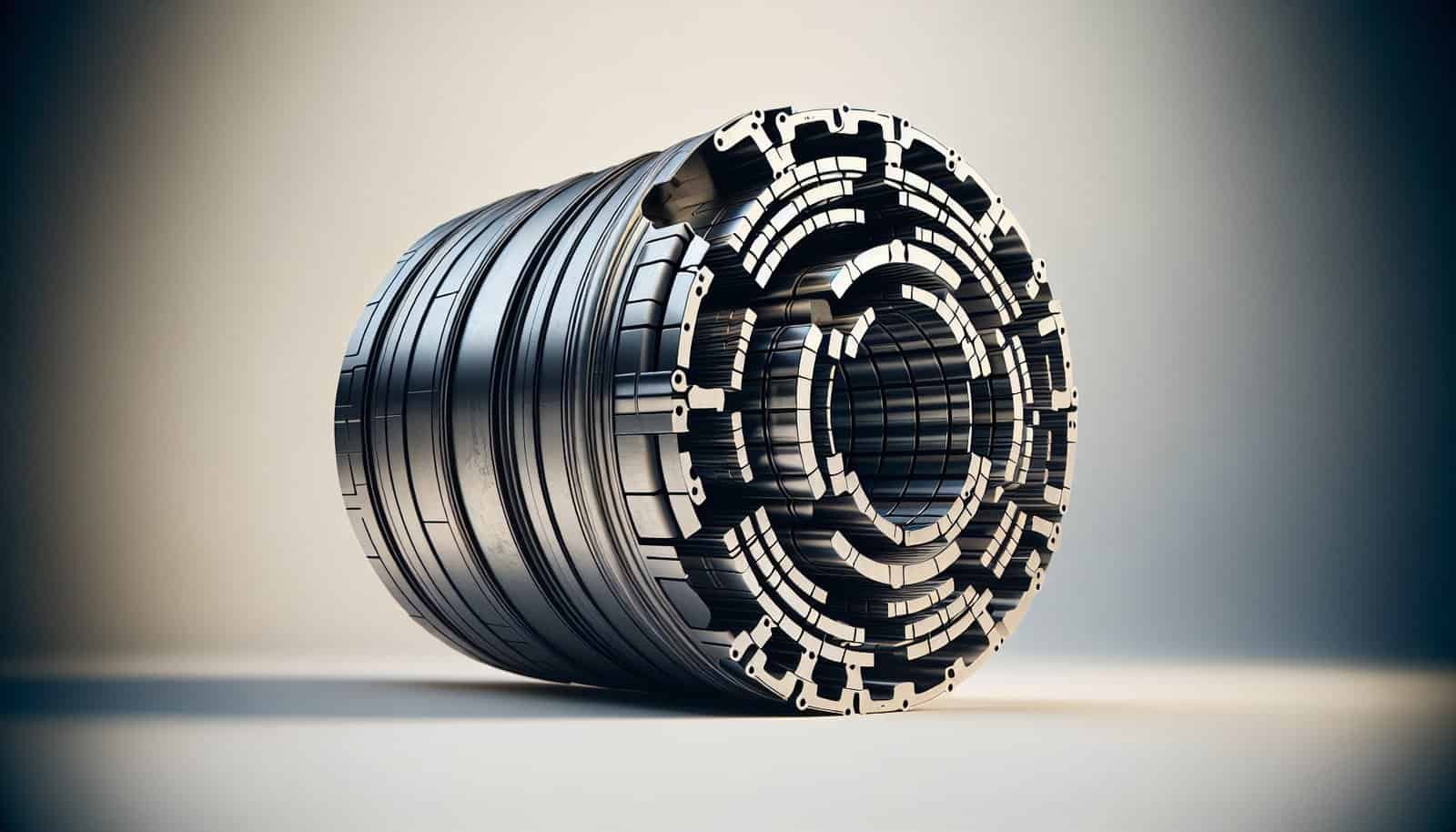Have you ever wondered what a well casing is and why it’s such a critical component in the process of drilling a well? If you’ve ever had questions about this, you are not alone. Many people aren’t fully aware of this essential element that plays a vital role in accessing groundwater or extracting oil and gas efficiently and safely.
Understanding Well Casings
Well casings are cylindrical structures that are inserted into a well to protect and support the well stream. By doing so, they serve multiple purposes, ensuring that the drilling process works smoothly while keeping water, oil, and gas uncontaminated.
Basic Components of a Well Casing
When considering a well casing, think of it as a protective sheath that maintains the structural integrity of the well. Typically made from steel or plastic, these casings vary in size and material depending on the type of well and the surrounding geological formations.
Materials Used:
Steel: Known for its strength and durability, steel is the traditional choice for well casings. It’s less likely to corrode, making it ideal for wells that penetrate harsh environments.
PVC or Plastic: Used mainly in shallow wells, PVC casings are lighter and often less expensive, although they might not withstand extreme pressures as well as steel.
Both materials have their merits, and the choice often depends on the specific requirements of the project as well as budget considerations.
Functions of a Well Casing
The well casing primarily serves to:
Prevent Contamination: By acting as a barrier, the casing prevents pollutants from entering the water supply or the oil and gas reservoir.
Maintain Integrity: It prevents the walls of the borehole from caving in, ensuring the well remains structurally sound.
Facilitate Well Installation: Provides a stable base for the installation of wellhead equipment and other operational components.
Protect Aquifers: Safeguards groundwater resources by isolating different layers and preventing cross-contamination.
Types of Well Casings
There are several types of well casings, and each serves a specific function within the well infrastructure. Understanding these types can help you recognize their importance and usage in different scenarios.
Surface Casings
These are used to reinforce the uppermost section of the well. The surface casing is crucial as it prevents surface contaminants from seeping into the well. Typically installed at shallow depths, this casing also counters any potential blowouts during drilling.
Intermediate Casings
Placed between the surface and production casings, intermediate casings serve as an additional layer of protection. They can be used to isolate unstable ground sections or areas with unexpected high-pressure zones.
Production Casings
This is the final casing layer and reaches the total depth of the well. Designed to maintain the well’s structural integrity, production casings facilitate the extraction process, whether it’s water, oil, or gas, ensuring smooth operations.
Liner Casings
Similar to production casings, liner casings are shorter and hung inside the primary casing. They’re cost-effective alternatives, used when a full string of production casing isn’t necessary.

Importance of Well Casings
Now that you have a better understanding of what well casings are, let’s dive into why they are so crucial. Without proper casing, the whole process of drilling a well—whether for water, oil, or gas—could face numerous challenges and risks.
Ensuring Safety and Environmental Protection
One of the primary reasons for utilizing well casings is to ensure that the extraction process doesn’t harm the environment. By preventing pollutants from entering groundwater supplies and keeping contaminants isolated, well casings help safeguard ecosystems.
Ensuring Structural Stability
Think of well casings as the spine of the drilling operation. They maintain the structural integrity of the wellbore, preventing cave-ins and ensuring everything remains stable as the drilling progresses.
Financial Efficiency
By protecting the well from costly damages and collapse, well casings minimize downtime and repair expenses. This efficiency leads to better management of resources and ensures that operations are financially viable in the long run.
Installation of Well Casings
Once you’ve decided on the appropriate type of casing for your well, the next step involves its installation. Proper installation is crucial to ensure the casing does what it intends to – support, protect, and facilitate.
Drilling the Borehole
Before you insert the casing, drilling a wellbore that meets the correct depth and diameter specifications is necessary. This initial phase involves careful planning and execution to avoid any complications later on.
Running the Casing
Once the borehole is ready, the next step involves guiding the casing pipe into position. This process requires precision to ensure the casing fits snugly within the borehole and offers the necessary support.
Cementing the Casing
To secure the casing in place, cementing is done. This step is pivotal as it fills any gaps between the borehole and casing, preventing fluid movement around the casing and improving the stability of the well.
Pressure Testing
After the casing is cemented, pressure testing ensures that the casing is adequately sealed and can withstand the operational pressures while maintaining safety standards.

Challenges and Considerations
While well casings are indispensable, several challenges must be considered when installing and maintaining them.
Corrosion and Erosion
Over time, especially with casings in oil and gas wells, corrosion and erosion can wear down the material. Regular inspection and maintenance are crucial to catching these issues early before they compromise well integrity.
Material Choice
Choosing the wrong casing material can lead to unexpected failures. It’s essential to assess the environmental conditions thoroughly and choose a material that offers the best resistance to those conditions.
Skilled Installation
Even the best casing can’t function properly if installed incorrectly. Ensuring that qualified professionals handle the installation can mitigate many potential issues.
Technological Innovations in Well Casing
The field of well drilling and casing has seen significant technological advancements, improving efficiency and reliability. Innovations focus on making casings more durable, easy to install, and more effective at isolating different zones.
Smart Casings
Modern well casings can include smart technologies that allow real-time monitoring of pressure, temperature, and other critical parameters. This proactive approach minimizes risks and enhances operational efficiency.
Enhanced Materials
Research into new materials, including composite materials and advanced metal alloys, has led to casings that more effectively combat the harsh chemical and physical stresses wells often face. These new materials promise longer lifespans and enhanced safety features.
Automated Installation
Automation in casing installation has reduced human errors and increased the precision of casing placement. This leads to fewer issues down the road, improving overall well performance.

Case Studies and Real-world Applications
Looking at real-world examples can illustrate how essential well casings are in various industries.
Groundwater Wells
In rural and suburban areas, groundwater plays a significant role in water supply. Casings ensure that the water remains uncontaminated and that the borehole remains stable over long periods.
Oil and Gas Extraction
Imagine the complexities involved when drilling miles beneath the Earth’s surface. Well casings in oil and gas operations are indispensable, preventing environmental disasters by isolating pressure zones and maintaining control over the extraction process.
Geothermal Wells
In geothermal energy production, well casings ensure that hot fluids can be extracted efficiently without compromising the surrounding geological integrity.
Conclusion
Understanding well casings—what they are, their types, significance, and installation—is crucial for anyone involved in or interested in drilling operations. Their role in ensuring safety, maintaining structural integrity, and safeguarding environmental resources cannot be understated. From the choice of materials to advanced technologies and skilled installations, every aspect contributes to the successful utilization of well casings in modern applications.
If you ever find yourself discussing drilling operations or contemplating a project in this field, you’ll now have a comprehensive understanding of just how pivotal well casings are in ensuring everything runs smoothly and safely.

